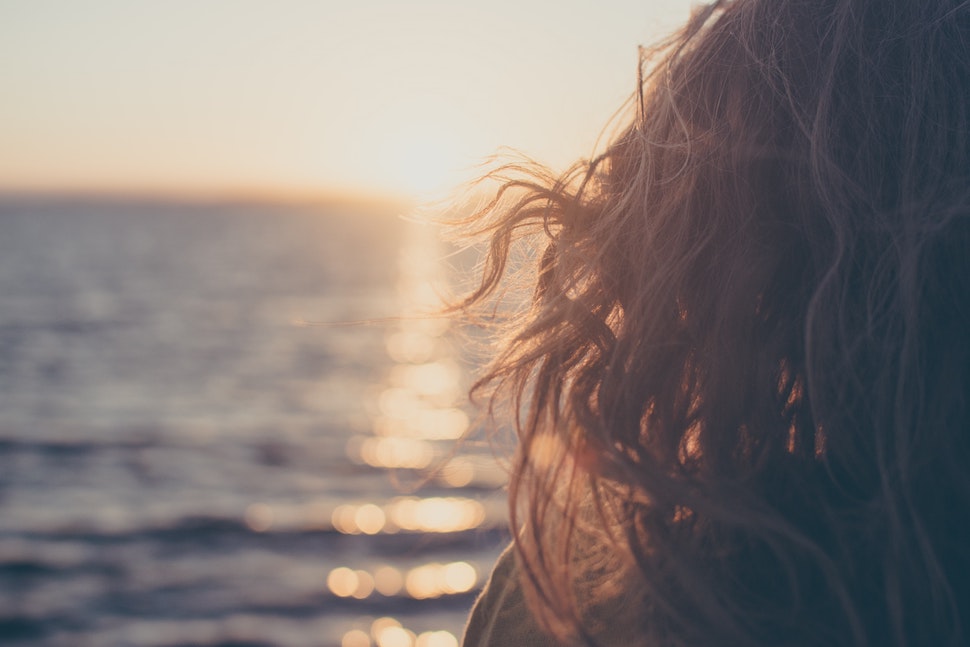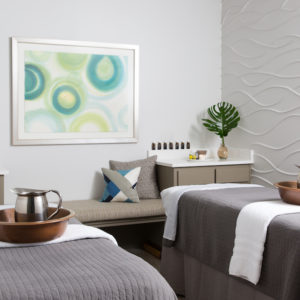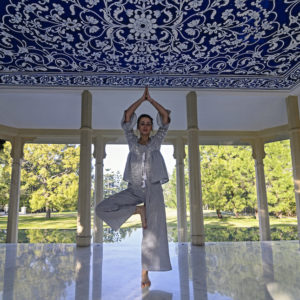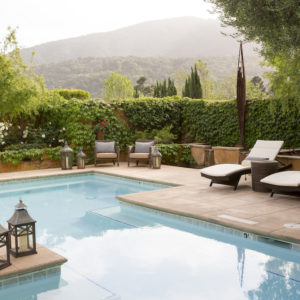
Two weeks ago I was in Milan.
That makes what is happening around the world, regarding coronavirus more vivid to me. The incessant chat, the growing problem, feels surreal and Edgar Allen Poe-like. Quietly, undramatically, I postponed an upcoming trip to India, and put myself into a self-imposed, not very anxious quarantine. During my tenure, I thought about how these unforeseen events rattle, maim, threaten, and fray what we perceive as the ordinary pace of our lives. By now, everybody has realized the myriad ways each of us contributes to the spreading of germs—even the cleanest, most considerate or most OCD amongst us. We all know about washing our hands and coughing into the elbow or a tissue. But, germ channels have surrounded us always. They’re part and parcel of our daily lives.
At my grocery store in Austin, for example, shoppers must weigh and label their own produce selections, each time tapping out a code onto one of several digital screens, which shoppers surely touch thousands of times daily, person after person, one (dirty?) finger after the other. I’ve never seen anyone decontaminate the machines (though maybe they do it at the end of each day). Suddenly, the specter of hundreds of shoppers sharing digital screens, kale or broccoli aloft, takes on the characteristics of a horror show.
“Safety now in the spas, for both staff and guests, is not that different from what we should be doing anyway,” says Sylvia Sepielli.
In general, we trust others to be hygienic. Often, it’s an unstated agreement. If someone offers you their hand, we assume, they’ve washed it. Don’t we? Which brings me to my thoughts on spas during the times of red code viruses. During eras of stress and disquiet, many of us turn to these sanctums. As havens, they may provide the one place we can escape to refuel, ease into repose and recalibrate. But what do spas do to ensure we are safe in their care? I reached out to more than 1,000 contacts in the industry last week to find out—and was sorely disappointed in the responses. Most people, no doubt, already run a very clean shop. But, I wanted reassurance. I wanted to know somebody (ideally everyone) had thought about upping the ante, going beyond the government proclaimed standards. Most publicists just responded that their clients followed strict guidelines for cleanliness, and offered stress-relieving treatments of various kinds. Good. Because apprehension and stress weakens the immune system. But, weren’t they doing more?

Hiatus day spa; photo by Molly Culver
Just when I thought I might not have anything germane to convey to our readers, I got an email from one of my favorite regional spa brands—Hiatus.Their innovative day spas occupy prime real estate in cities such as Austin, Dallas, Houston, and San Antonio. This pro-active email didn’t come to me as a writer. It was sent directly to each of their clients. “I was in my Megaformer Pilates class,” says Hiatus Co-Founder Sheila Garrison, “and I found myself wondering about their (cleanliness) practices.” At that moment, Garrison realized it was prudent to send something to ease the minds of Hiatus guests and staff alike. The email began: “Dear Hiatus Family,” and went on to simply list some of the every day actions (from the use of medical grade cleaners to the disinfecting of even the tiniest bit of plastic or metal after each treatment, to the pervasive availability of hand sanitizer and anti-bac soap throughout the spa) already in place. In addition, the missive also noted current CDC recommendations, and reminded guests that anyone with symptoms should not be at the spa for work or play. Delivered without alarm or hysteria, the frank email clarified the unspoken contract. Essentially, it promised to help keep clients safe—but we, as guests, have to do our part, too.
In thinking about this, I also talked to my good friend Sylvia Sepielli, spa designer, spa expert, and spa trainer extraordinaire. I was wondering about estheticians wearing face masks during facials, even bodywork therapists doing the same. It’s well known that this is standard practice in Asia, indeed in many spas globally. It may look “weird or medical,” but I always feel rather secure when a mask is worn. “Safety now in the spas, for both staff and guests, is not that different from what we should be doing anyway, says Sepielli. “Hand washing, sanitation, facial masks for the estheticians when breathing directly on people, not working while sick (nor working on people who we know to be sick) are all part of that,” she says, noting that when something unexpected, such as Covid-19, occurs we are “ all jolted back into the reality of the consequences of not following protocol—a positive upside.” Sometimes we need reminders. Sometimes, it may be an unwanted event that redirects us on that path.
From yoga studios quickly implementing policies, such as wiping down props more rigorously to spas revving up precautionary measures (even if that detracts from the soothing atmosphere for a time), protocol and the offering of a safe place to de-stress reigns. Spas can heal our spirits, and keep us healthy on many levels. But, we must all interact in our besieged world responsibly and unselfishly—that’s part of our contract.

Ananda in the Himalayas
Three Thoughts from Some of the World’s Best Spas
From Ananda in the Himalayas
A recipe from one of India’s most healing retreats, located near Rishikesh, one of the yoga world’s most sacred spots. When asked advice on responding to the virus, Ananda Spa Director, Ankur Verma, shares, “It is important to not go into a deep state of panic. Drink plenty of warm water. Staying well-hydrated will keep the throat and mucous membrane moist, supporting its action as a good barrier to all microbes. Ginger-lemon tea, served with honey, is a good option. Use turmeric and black pepper in the meals daily, to boost immunity and reduce ama (toxins). Turmeric can be taken as a drink with almond milk or added to morning oats to prepare a nourishing golden porridge.”
From Lake Austin Spa Resort
Enjoy water’s curative effects at this water-side, lake-house intoned wellness mecca near Austin, Texas. Though the spa menu proffers more than 100 diverse treatments, the resort lets nature lead, showcasing Ripple Effects, their water-inspired programs that draw from the Blue Mind state (and wellness philosophy), a scientifically proved shift that brings calm and peace to those reposing by water. Shown to reset our bodies, water activates and awakens the five senses and leads to euphoria and tranquility. At Lake Austin, kayak, swim, paddle board, cruise, and linger in a hammock to the lullaby of rippling H20.

Bernardus Lodge & Spa
From Bernardus Lodge & Spa
Borrowing from the Japanese practice of Shinrin-Yoku, or forest bathing, made famous in the 1980’s, a key path to preventative healthcare in Japan, Mendocino County offers a number of places to get back to nature. Research shows that being among a leafy environment can counter serious disease, calm the spirit, lower blood pressure, and uplift the heart. At savvy Bernardus Lodge, a wine country retreat, you can do that in style. Consider their Forest Bathe & Forage experience, which envelops you in greenery for four hours among the El Sur Grande Wilderness.
Editor’s Note: The International Spa Association (ISPA) is committed to informing members about the impact of COVID-19 and providing resources that can help spa staff and guests. The association has created a Resource page with updated guidance from the World Health Organization and the Centers for Disease Control, as well as a number of other resources.
Becca Hensley
Becca Hensley is Editor at Large for Insider's Guide to Spas. Based in Austin, she writes regularly about travel and spas. She believes a good story draws you in like laughter in a crowded room, and challenges you to do it justice. Her work appears regularly in Austin Monthly, Travel Channel, Toronto Star and National Geographic Traveler.